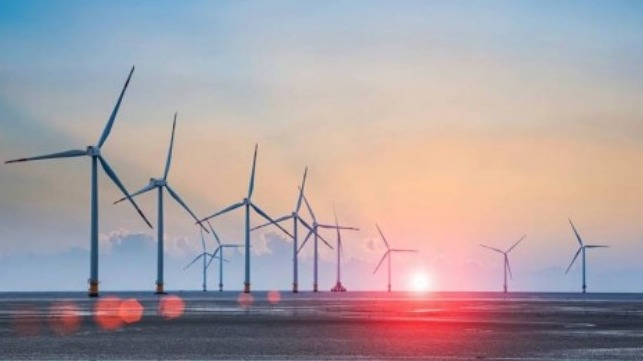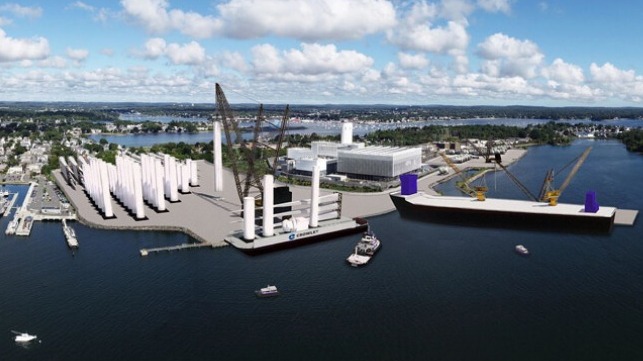BOEM Releases Final Environmental Report as New England Wind Nears Approval

The U.S. offshore wind energy sector continues to develop momentum as the Biden administration continues forward with its clean energy agenda. In the latest development, the Bureau of Ocean Energy Management (BOEM) completed its environmental review of the proposed New England Wind project offshore Massachusetts. This month, BOEM completed this review as well as approved the construction plan for Empire Wind, and defined the Oregon offshore wind area.
Today’s announcement highlights the time involved in the review process which several projects have now completed. The first lease for the site originally known as Vineyard Wind South was awarded in 2015 but in 2021 was transferred by Avangrid to Park City Wind and renamed New England Wind. The comment period on the draft environmental impact statement closed a year ago.
BOEM has completed the process and will publish the final statement at the end of this week. They note that they considered 776 comments received when developing the Final EIS for this project. The final environmental impact statement (Final EIS) analyzes the potential environmental impacts of the activities laid out in the New England Wind project’s construction and operations plan and reasonable alternatives.
The agency will now complete its final review and plans to issue a record of decision on whether to approve the project no earlier than April 2024. If the project is approved, the record of decision will also identify any conditions of approval.
The New England Wind project is located about 20 nautical miles south of Martha’s Vineyard, Massachusetts, and about 24 nautical miles southwest of Nantucket. BOEM estimates the proposed project would generate up to 2,600 megawatts of electricity, enough to power more than 900,000 homes. Park City, submitted a two-phased project plan that includes up to 129 wind turbines, with up to five offshore export cables that would transmit electricity to onshore transmission systems in the Town of Barnstable and Bristol County, Massachusetts.
Rhode Island in October 2023 approved the first phase of the project as a small portion of the export cable would pass through the state’s waters. The first phase calls for 804 MW provided from 84 turbines.
BOEM Director Elizabeth Klein emphasized that this release demonstrates the administration’s steady progress toward attaining its clean energy goals. The Department of the Interior has approved the nation's first six commercial-scale offshore wind energy projects with both South Fork Wind and Vineyard Wind recently starting to generate power. BOEM has held four offshore wind lease auctions, including the first-ever sales offshore the Pacific and Gulf of Mexico coasts. BOEM also advanced the process to explore additional opportunities for offshore wind energy development in the Gulf of Maine, the Gulf of Mexico, and offshore Oregon and the Central Atlantic coast.
BOEM previously said it remains on track to complete reviews of at least 16 offshore wind energy project plans by 2025, representing more than 27 gigawatts of clean energy
Massachusetts and Crowley Move Forward with State’s Second Wind Port

Massachusetts in partnership with Crowley Wind Services is moving forward with the effort to redevelop an industrial site in Salem into the state’s second wind port. In addition to expanding capacity to support the development of the state’s wind programs, they envision it as a regional center that will be one of the few sites able to support the construction and installation of floating offshore wind in the Gulf of Maine.
Crowley purchased the property in the historic city of Salem in 2022 as part of the plan to transform the site of an oil- and coal-fired power plant into a wind port facility. They have been working since 2022 to transform the site of a former plant and lay the foundation to support the wind port development. The power plant closed in 2014.
Massachusetts’s state economic development agency dedicated to accelerating the growth of the clean energy sector, Massachusetts Clean Energy Center (MassCEC) acquired 42 acres on Salem Harbor as the next phase in the development. Five acres, including the port’s existing deep-water berth, were transferred to the City of Salem.
“Adding the Salem Port to its portfolio, along with the New Bedford Marine Commerce Terminal and the Wind Technology Testing Center, will further elevate Massachusetts as a global leader in the offshore wind industry. This partnership with the City of Salem and Crowley will deliver another port built specifically for offshore wind,” said Massachusetts Governor Maura Healey.
Crowley’s Wind Services business unit will start construction in 2024, strengthening the site infrastructure to accommodate heavy machinery and equipment. The project also includes the construction of a second state-of-the-art ship berth and the upgrade of the city berth. They will also oversee the implementation of dredging activities to enhance the harbor channel. The port is projected to open in 2026.
Crowley will manage the site redevelopment and improvements and then serve as the terminal operator, entering into a lease agreement with MassCEC for the ongoing utilization of the property as an offshore wind marshaling port with priority for offshore wind projects serving Massachusetts. The City of Salem has leased the berth and its acreage for the same purpose. Besides operating vessels and terminals, Crowley will provide supply chain management, construction engineering, and project management services, and operations and maintenance solutions.
Massachusetts’s first dedicated offshore wind port is the New Bedford Wind Commerce Center, which is also owned and operated by MassCEC. The terminal is unique in that it is a multi-purpose facility designed to support the construction, assembly, and deployment of offshore wind projects, as well as handle bulk, break-bulk, container shipping, and large specialty marine cargo. It is currently leased to Vineyard Wind, one of the first large offshore wind farms under construction in the United States.
The MassCEC Wind Technology Testing Center, located in Charlestown, Massachusetts,?provides a full suite of certification tests for turbine blades up to 90 meters in length. It uses the latest wind turbine blade testing and prototype development methodologies to help the wind industry deploy the next generation of land-based and offshore wind turbine technologies.
No comments:
Post a Comment